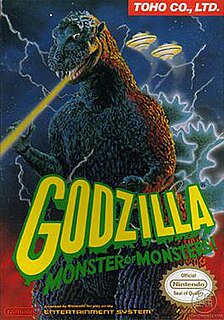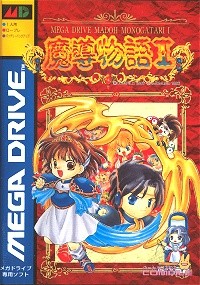 W
WAleste (アレスタ) is a 1988 shoot 'em up video game developed by Compile, originally published by Sega for the Master System and then by CP Communications for the MSX2. The Master System version was released outside Japan as Power Strike. The game spawned the Aleste and Power Strike franchises.
 W
WAleste 2 (アレスタ2) is a scrolling shooter video game developed and released by Compile for the MSX2 in 1989 exclusively in Japan. It is a sequel to Aleste and is the first game in the Aleste series to feature the recurring series heroine Ellinor who later appeared in Musha Aleste. Aleste 2, along with other Compile shooters, was also released for the now-defunct WOOMB service. In 2009, ProjectEGG released the game digitally for Windows, also in English.
 W
WAlien Crush is a pinball video game developed by Compile for the PC Engine/TurboGrafx-16. It was released in 1988. The game is the first installment in the Crush Pinball series. It was followed by three sequels, Devil's Crush, Jaki Crush, and Alien Crush Returns. Alien Crush was later rereleased on the Virtual Console and on the PlayStation Network.
 W
WGunhed, known as Blazing Lazers in North America, is a vertically scrolling shooter game by Hudson Soft and Compile, based on the Japanese film Gunhed. The title was released in 1989, for the PC Engine in Japan and re-skinned for the TurboGrafx-16 in North America, with Gunhed unofficially imported for the PC Engine in Europe. In the game, a fictional galaxy is under attack by an enemy space armada called the Dark Squadron, and this galaxy's only chance for survival is the Gunhed Advanced Star Fighter, who must destroy the Dark Squadron and its Super Weapons. The gameplay features fast vertical scrolling and a wide array of weapons for the player to use.
 W
WDevil's Crush is a pinball video game developed by Compile for the TurboGrafx-16 and released in 1990. The second installment in the Crush Pinball series after Alien Crush, the game has an eerie occult theme with skulls, skeletons, and demons. It was later followed by Jaki Crush and Alien Crush Returns.
 W
WDr. Robotnik's Mean Bean Machine is a falling block puzzle game developed by Compile and published by Sega. It was released for the Genesis/Mega Drive in North America and Europe in November 1993, and ported to the Game Gear in 1993 and Master System in 1994.
 W
WGodzilla is a Game Boy video game developed by Compile. Although it was released in 1990, all of the monsters are from the Showa generation. The game is a port of an edition from the MSX console. Also the international version is slightly different from the Japanese version.
 W
WGodzilla: Monster of Monsters! (ゴジラ) is a Nintendo Entertainment System video game released in the US in 1988 by Toho Co., Ltd. The North American version removes all references to Toho Cenfile-Soft Library and Compile, crediting the game to Toho Eizo on the title screen instead.
 W
WGorby no Pipeline Daisakusen is a puzzle video game developed by Compile for the MSX2, Famicom, and FM Towns. It was published by Tokuma Shoten in 1991.
 W
WThe Guardian Legend is a 1988 hybrid action-adventure/shoot 'em up video game developed by Compile for the Nintendo Entertainment System (NES). It is the sequel to the 1986 MSX game Guardic, and was published and released in Japan by Irem in 1988, in North America by Broderbund in 1989, and in Europe by Nintendo in 1990.
 W
WGun-Nac is a 1990 scrolling shooter video game developed by Compile and published by Tonkin House for the Nintendo Entertainment System. The game was released in Japan on October 5, 1990 and in North America in September 1991.
 W
WGuru Logi Champ is a puzzle game by the Japanese developer Compile. The game was released in 2001 for the Game Boy Advance handheld game system. "Guru Logi" is an abbreviation of "Guruguru Logic", "guruguru" (ぐるぐる) being a Japanese onomatopoeia for a rotating motion.
 W
WJaki Crush is a pinball video game developed by Compile and published by NAXAT Soft. Jaki Crush was released exclusively in Japan for the Super Famicom in 1992. The game is the third in the Crush Pinball series, and was preceded by Alien Crush and Devil's Crush on the TurboGrafx-16.
 W
WLunar Pool is a video game that combines pool with aspects of miniature golf, created and developed by Compile for the Nintendo Entertainment System and MSX, in which each stage is a differently shaped pool table. The object is to knock each ball into a pocket using a cue ball. There are sixty levels to choose from, and the friction of the table is adjustable.
 W
WMadō Monogatari I is a role-playing video game for the Mega Drive that was the last official Sega Mega Drive game released in Japan. The game is part of the long-running Madō Monogatari series.
 W
WMUSHA is a vertically scrolling shooter developed by Compile and released for the Sega Genesis in 1990. An entry in Compile's shooter series, Aleste, MUSHA places the player in the role of a flying mecha pilot who must destroy a large super intelligent computer threatening planet Earth. The game had a working title of Aleste 2 and originally featured a style similar to the first game, but this was changed to a more original Japanese aesthetic and speed metal soundtrack.
 W
WPuyo Puyo (ぷよぷよ) is a puzzle video game released in 1991 by Compile for the MSX2. Since its creation, it uses characters from Madou Monogatari. It was created by Masamitsu "Moo" Niitani, the founder of Compile, who was inspired by certain elements from the Tetris and Dr. Mario series of games.
 W
WPuyo Puyo 2 is the second installment of the Puyo Puyo games; the sequel to Puyo Puyo, made in 1994 by Compile. Compile put more thought into this game after its predecessor became successful, but never knew how much of a turnaround the game would bring.
 W
WPuyo Puyo~n , also known as Puyo Puyo 4, and Puyo Puyo~n Party is the fourth installment of the Puyo Puyo puzzle game series, created by Compile for the Dreamcast, PlayStation, Nintendo 64 and Game Boy Color. Like many of the Puyo Puyo games, it was never officially released outside Japan. The title of Puyo Puyo~n comes from the Japanese word yon , signifying the fourth game in the series. Plans were made for a 64DD version entitled Puyo Puyo~n 64 , but it was later cancelled for the N64 release.
 W
WPuyo Puyo Sun is the third installment of the Puyo Puyo games series, and the sequel to Puyo Puyo 2, made in 1996 by Compile. After the highly acclaimed success of its predecessor, Compile took a slightly more retro approach, so players had a more original feel to the game over that of 2.
 W
WRobo Aleste, released in Japan as Dennin Aleste (電忍アレスタ), is a 1992 vertically scrolling shooter video game developed and published by Compile for the Sega CD. Tengen and Sega released the English version of the game overseas in 1993. It is the last game in the Aleste series, and is a follow-up to MUSHA for the Sega Genesis. A Sequel titled Dennin Aleste 2 was planned for the Sega CD on 1993, but was cancelled.
 W
WRomancia (ロマンシア), also known as Dragon Slayer Jr., is an action-adventure game developed by Nihon Falcom. It is the third installment in the Dragon Slayer series, preceded by Xanadu and followed by Dragon Slayer IV.
 W
WSeirei Senshi Spriggan is a 1991 vertically scrolling shooter video game developed by Compile and published by Naxat Soft in Japan for the PC Engine CD-ROM². In the game, the player assume control of Jega and Rikart piloting the Spriggan in order to protect their country from the Buraizubara empire.
 W
WSpace Megaforce, known in Japan and Europe as Super Aleste , is a vertically scrolling shoot 'em up video game developed by Compile. It was published by Toho in 1992 for the Super Nintendo Entertainment System as part of the Aleste series. In a traditional fashion, the player pilots a spaceship through a variety of locales crawling with enemy squadrons to shoot down, though the story in the Japanese version is different from the American and European one. Super Aleste also offers a "Short Game", featuring short segments of the regular levels, with the emphasis on scoring as many points as possible.
 W
WTombs & Treasure, known in Japan as Asteka II: Templo del Sol , is an adventure game originally developed by Falcom in 1986 for the PC-8801, PC-9801, FM-7, MSX 2 and X1 Japanese computer systems. A Famicom/NES version, released in 1988, was altered to be more story-based, and features new music and role-playing elements; an English-language NES version was published by Infocom in 1991. Japanese enhanced remakes were released for the Saturn and Windows systems in 1998 and 1999, respectively.
 W
WZanac (ザナック) is an arcade-style shoot 'em up video game designed by Compile and published in Japan by Pony Canyon and in North America by FCI. It was released for the MSX computer, the Family Computer Disk System, the Nintendo Entertainment System, and for the Virtual Console. It was reworked for the MSX2 computer as Zanac EX and for the PlayStation as Zanac X Zanac. Players fly a lone starfighter, dubbed the AFX-6502 Zanac, through twelve levels; their goal is to destroy the System—a part-organic, part-mechanical entity bent on destroying mankind.